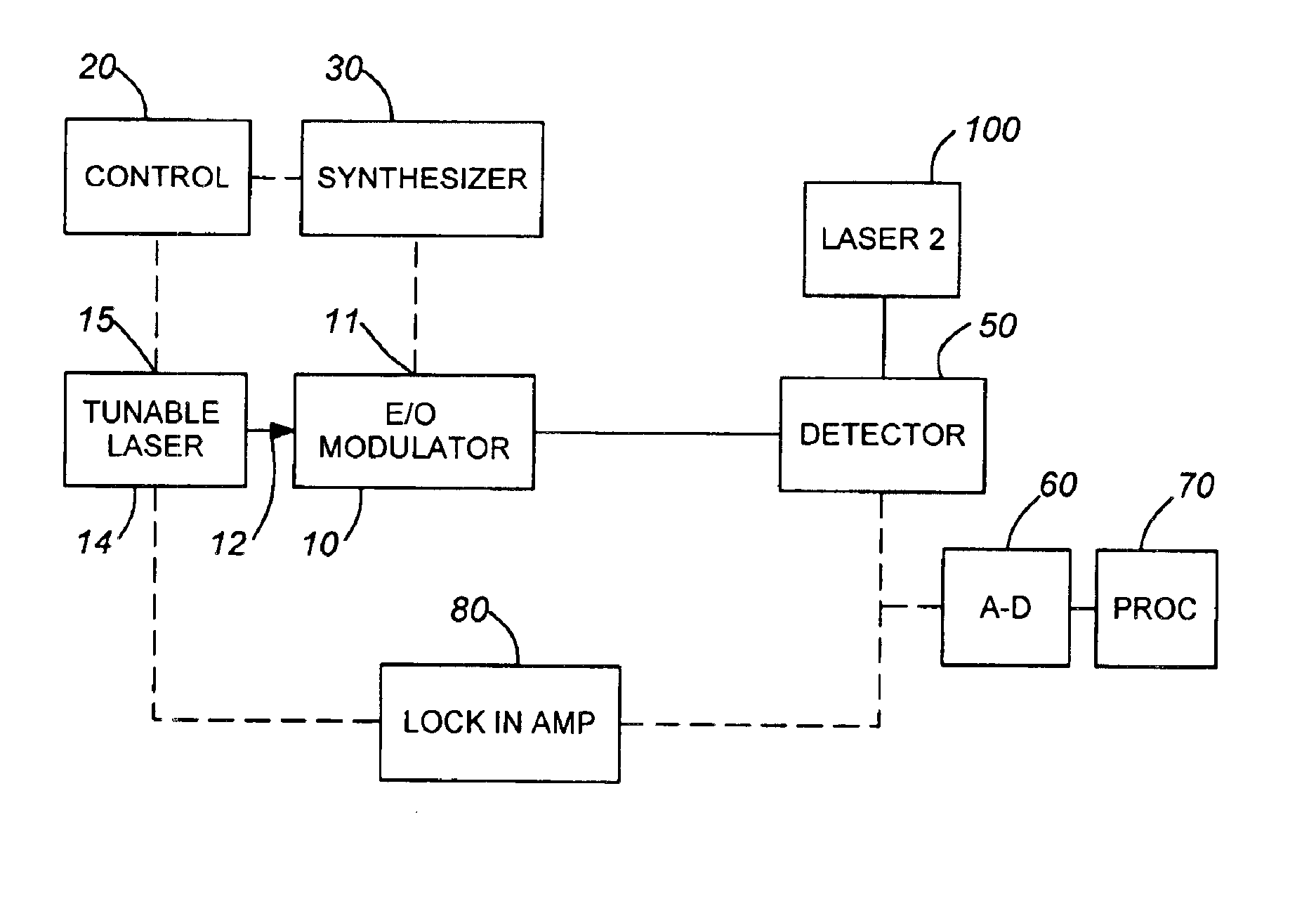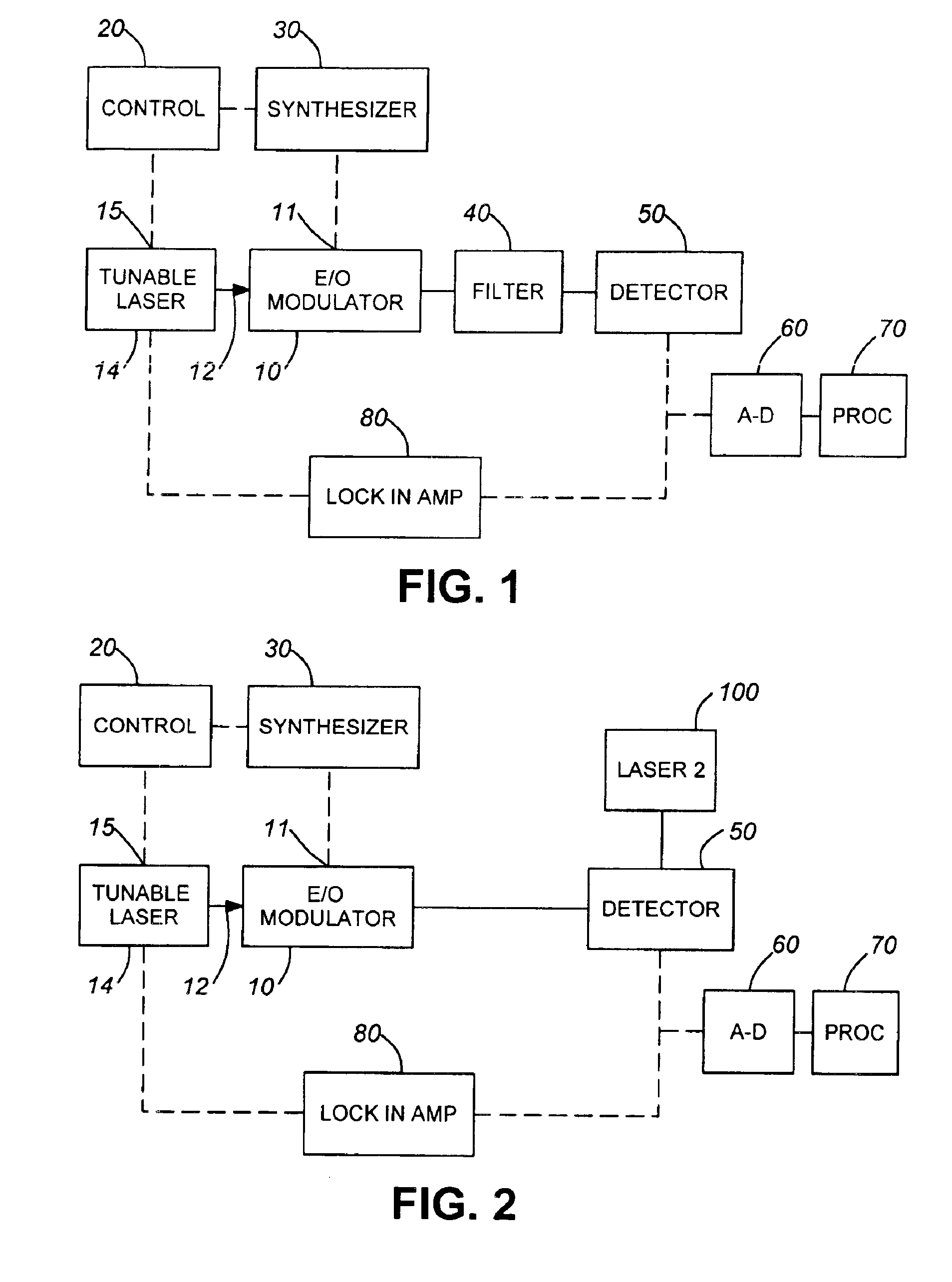Mixing method and apparatus for characterizing optical modulator
a technology of optical modulator and mixing method, applied in the field of optical communication system, can solve the problems of high cost and difficult calibration of detection subsystem, and achieve the effect of high cost and complex calibration
- Summary
- Abstract
- Description
- Claims
- Application Information
AI Technical Summary
Benefits of technology
Problems solved by technology
Method used
Image
Examples
first embodiment
However, rather than being filtered by means of a relatively narrowband bandpass optical filter installed in the output path of the modulator 10, as in the first embodiment, the modulated beam output of modulator 10 in the embodiment of FIG. 2 is directly incident upon the optical aperture of the detector 50. In addition, a second laser 100 has its output beam coincidentally incident upon the same optical aperture of the optical detector 50. This may be effecting using a suitable coupler (not shown). This coincidence of the two laser beams on the beam receiving sensitivity region of the detector creates a heterodyne effect therebetween, resulting in sum and difference optical beat frequencies between the carrier frequency fc14 of the tunable laser 14 and the carrier frequency fc100 of the laser 100 at the optical detector's input aperture sensitivity region. The frequency fc100 of the laser 100 may be the same as or relatively close to the carrier frequency fc14 of the tunable laser...
second embodiment
Since the frequency difference between the sideband energy and the carrier fc14 produced by tunable laser 14 falls within the tuning window over which the modulation frequency is varied (e.g., 100 kHz to 50 GHz), then in order to use a relatively inexpensive optical detector having a relatively low frequency sensitivity range, it is necessary to remove this carrier from the optical detector input. As pointed out above, this is accomplished in the second embodiment by optically heterodyning the carrier frequency fc14 produced by tunable laser 14 with the output beam frequency fc100 of the second laser 100 at the optical sensitivity aperture of the detector 50.
As in the first embodiment, the resulting narrowband output of detector 50 may be digitized by A-D converter 60 for analysis by processor 70. Also, the phase response of the modulator may be measured by imparting a relatively low frequency signal to the tunable laser 14 as by means of lock-in amplifier 80, the output of which is...
PUM
| Property | Measurement | Unit |
|---|---|---|
| frequency | aaaaa | aaaaa |
| frequency | aaaaa | aaaaa |
| frequency sensitivity | aaaaa | aaaaa |
Abstract
Description
Claims
Application Information
 Login to View More
Login to View More - R&D
- Intellectual Property
- Life Sciences
- Materials
- Tech Scout
- Unparalleled Data Quality
- Higher Quality Content
- 60% Fewer Hallucinations
Browse by: Latest US Patents, China's latest patents, Technical Efficacy Thesaurus, Application Domain, Technology Topic, Popular Technical Reports.
© 2025 PatSnap. All rights reserved.Legal|Privacy policy|Modern Slavery Act Transparency Statement|Sitemap|About US| Contact US: help@patsnap.com


